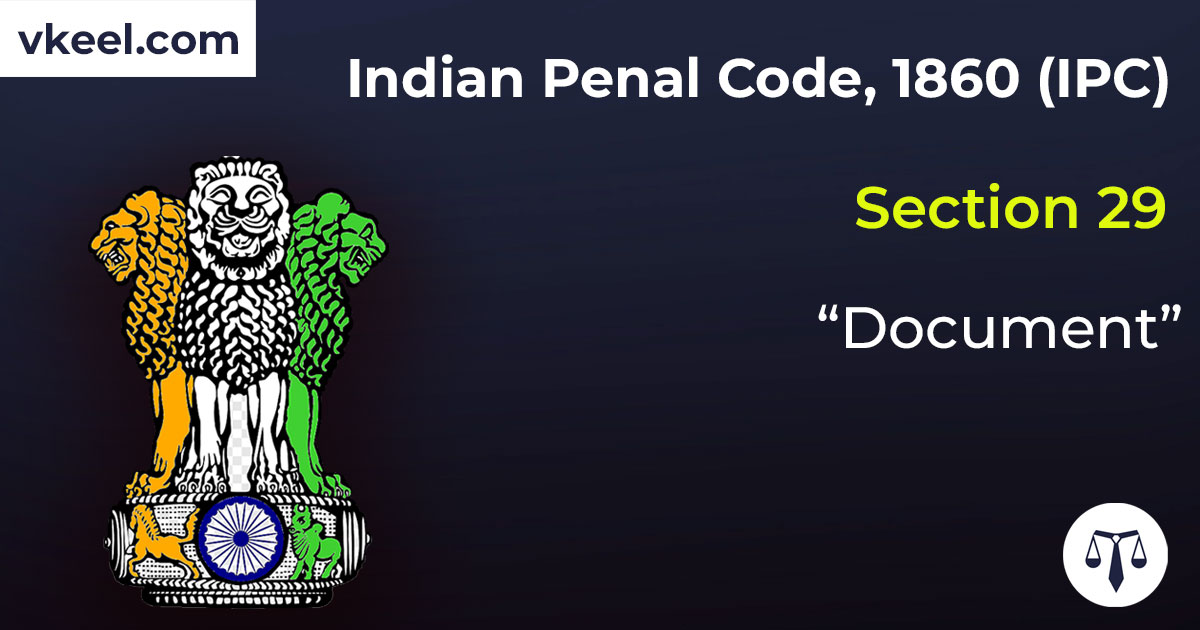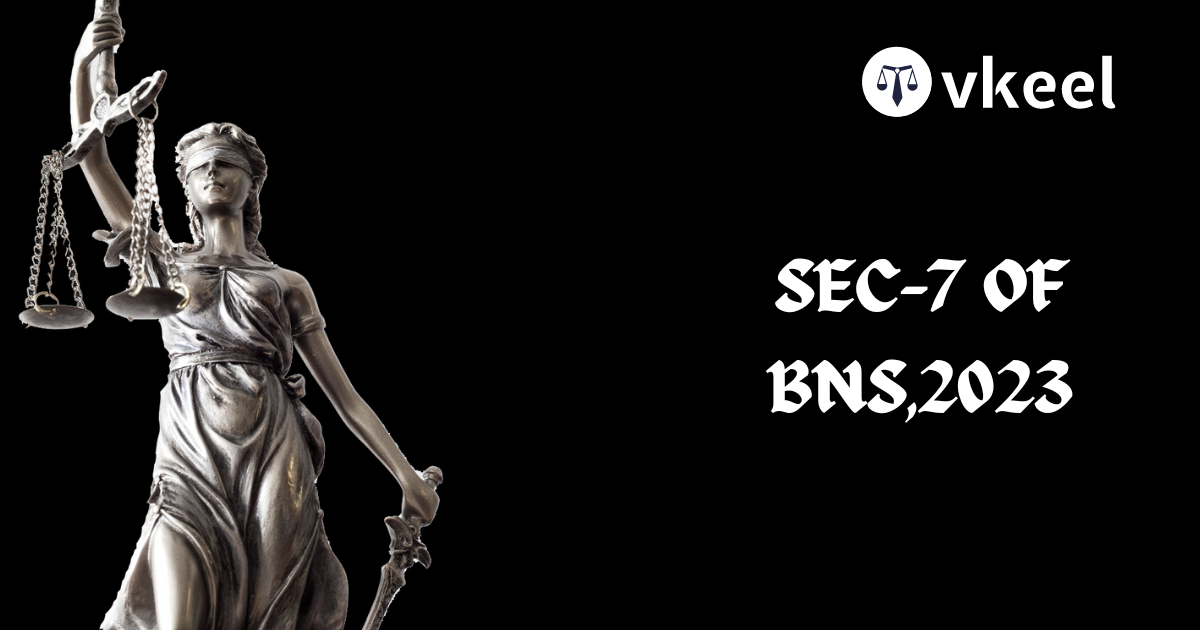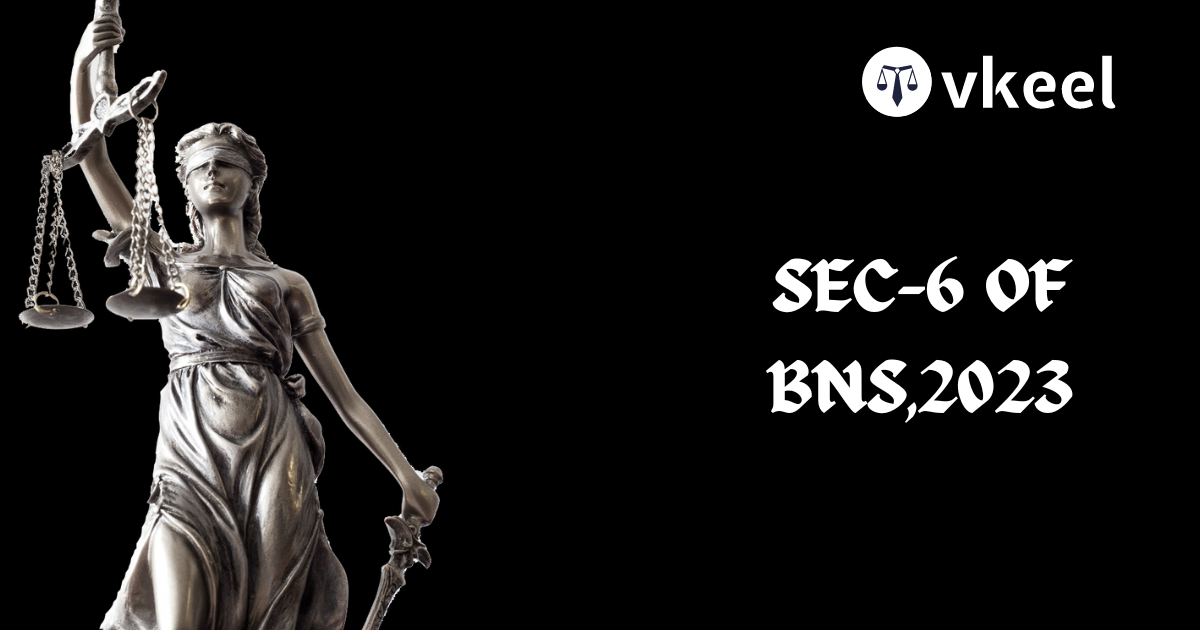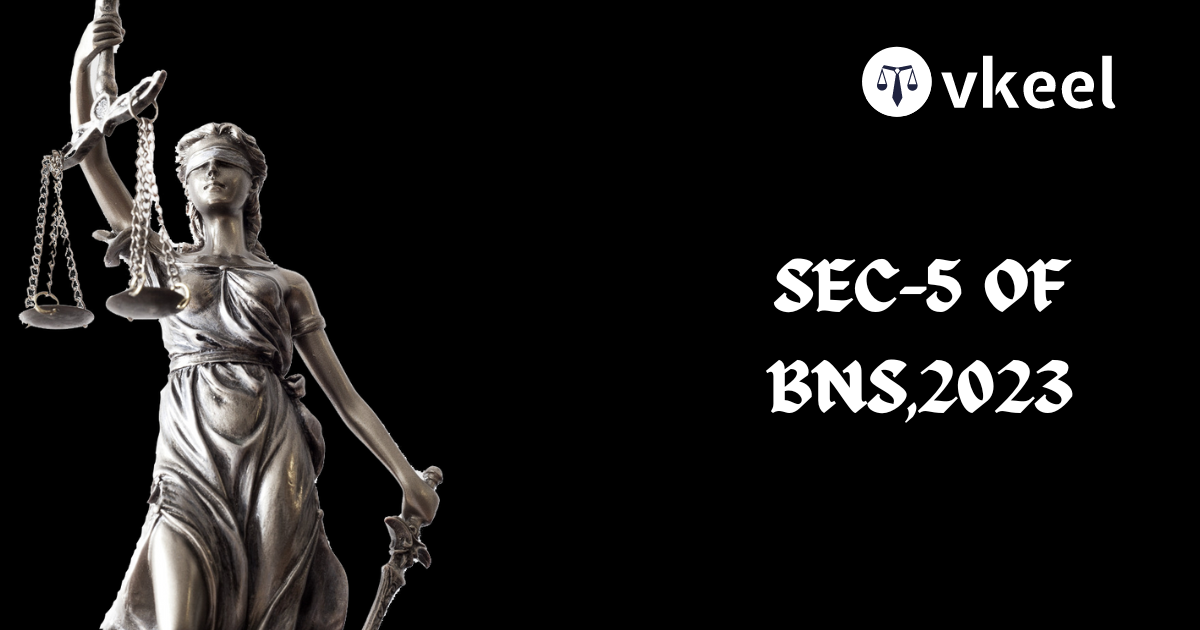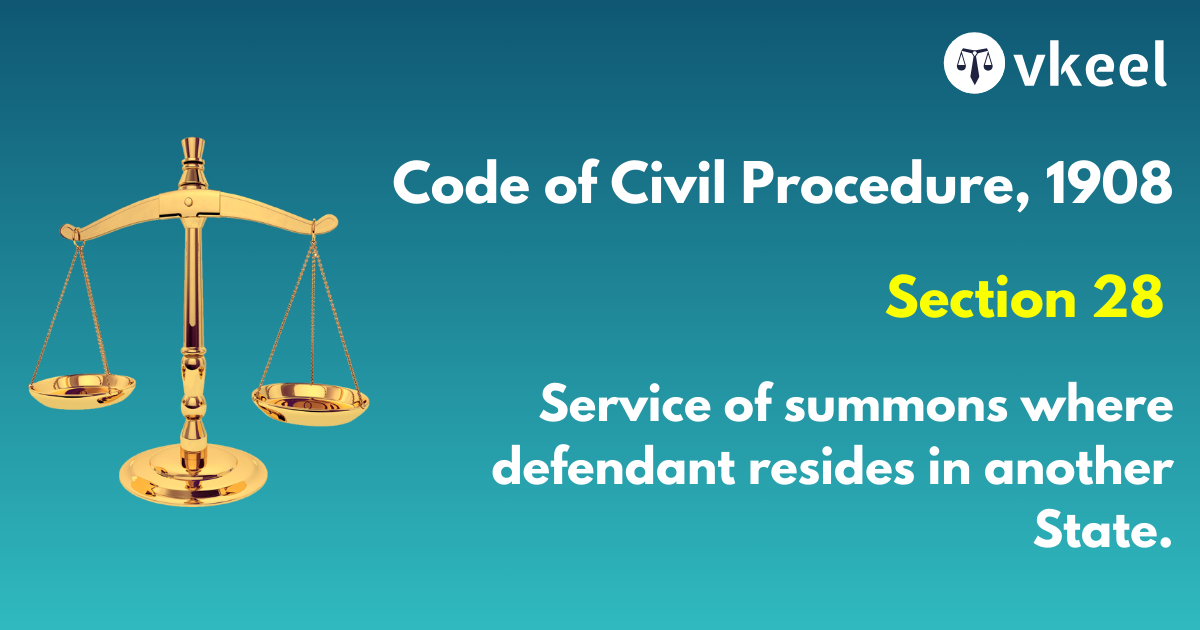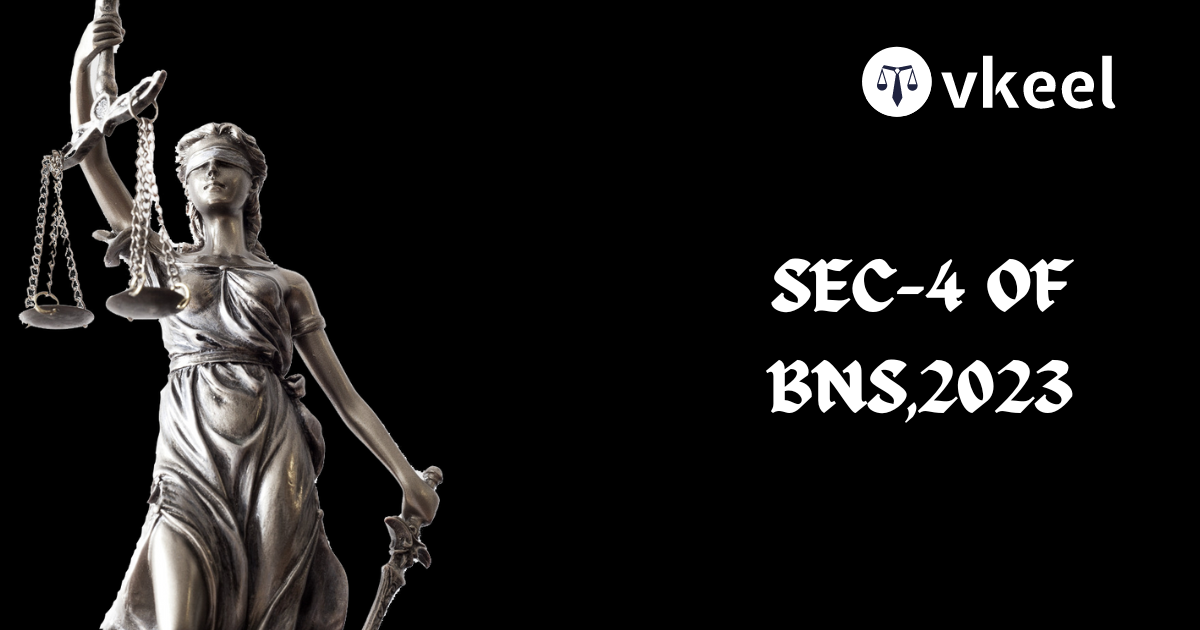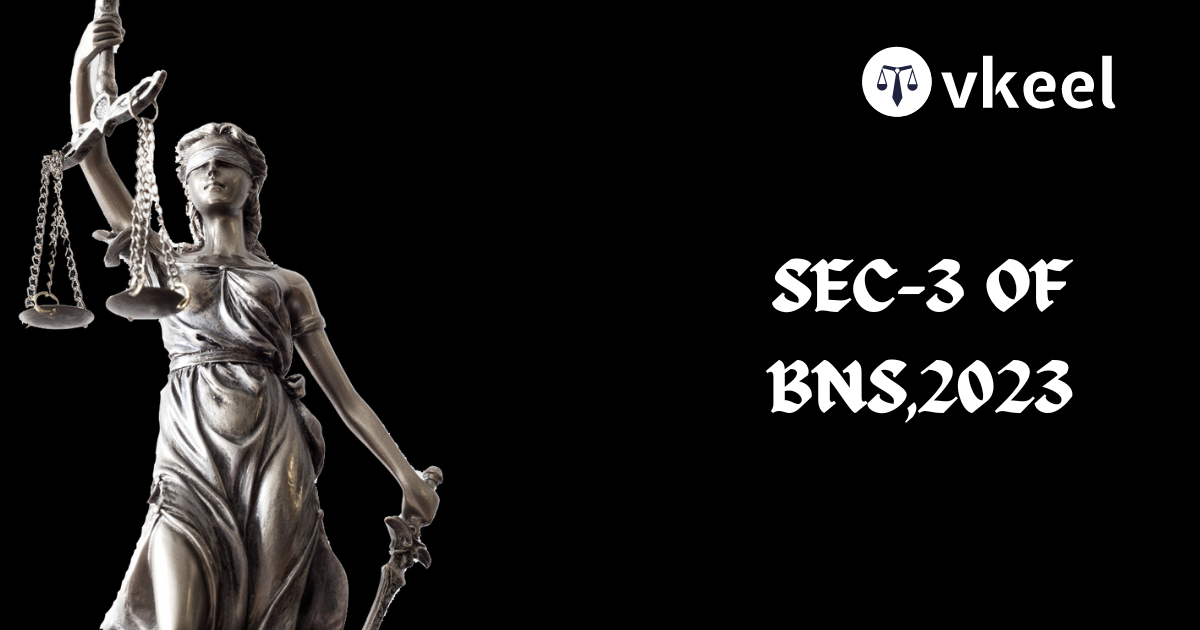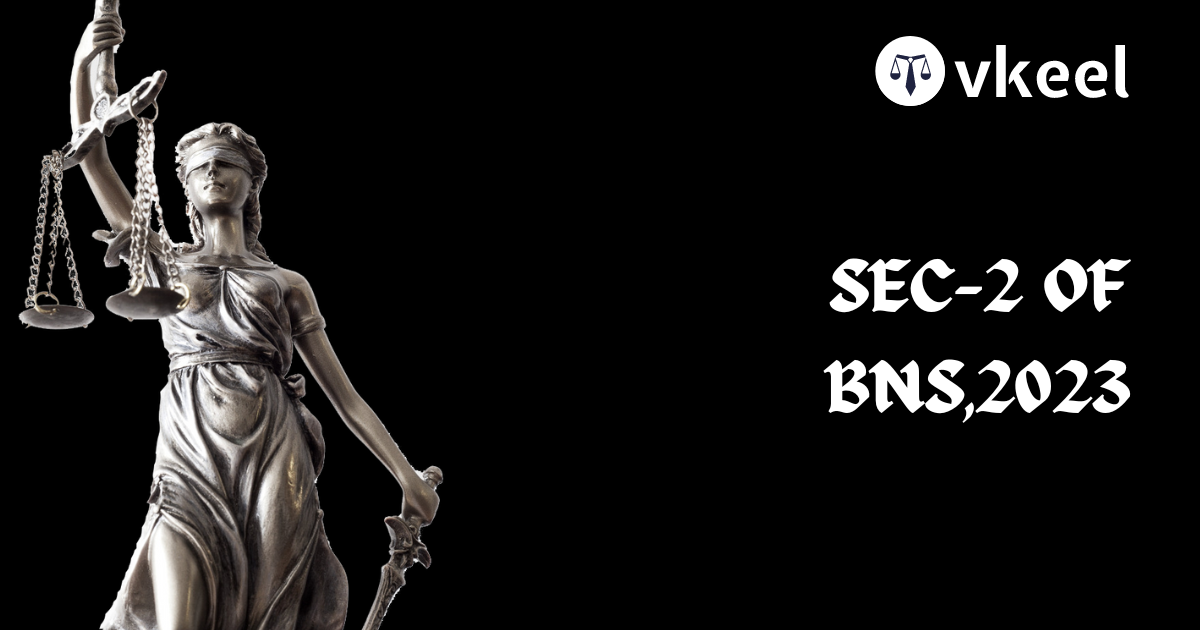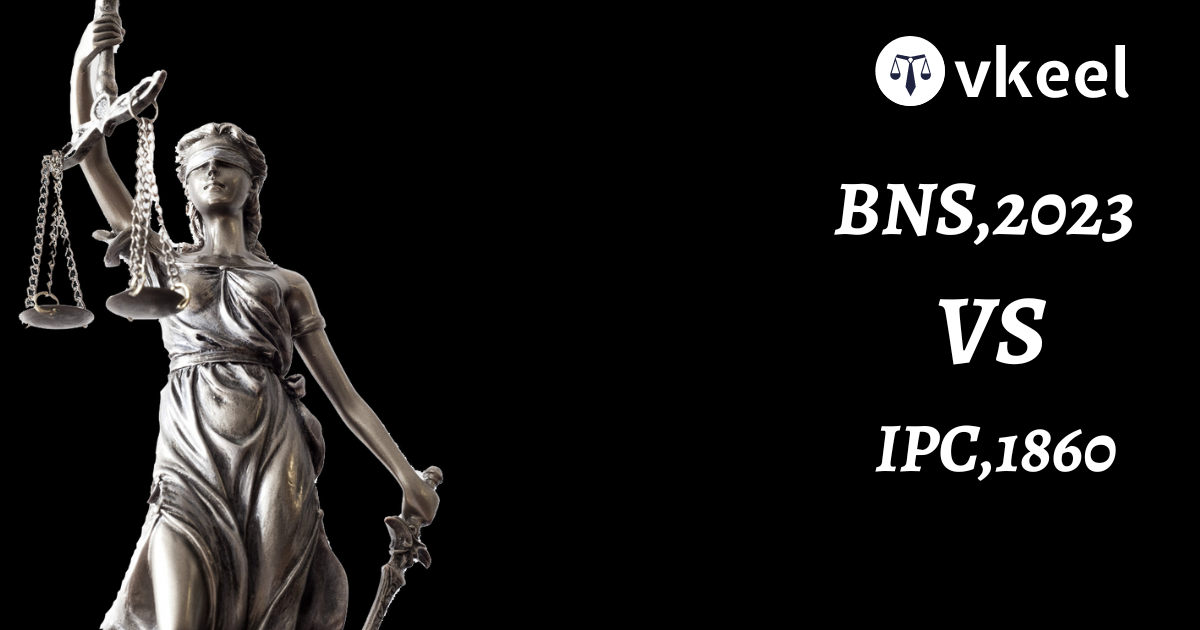Section 29 Indian Penal Code 1860 (IPC) – “Document”
By Vkeel Team
Table of Contents
Description
“Section 29 Indian Penal Code 1860 (IPC)”
The word “document” denotes any matter expressed or described upon any substance by means of letters, figures or marks, or by more than one of those means, intended to be used, or which may be used, as evidence of that matter.
Explanation 1.—It is immaterial by what means or upon what substance the letters, figures or marks are formed, or whether the evidence is intended for, or may be used in, a Court of Justice, or not.
Illustrations
A writing expressing the terms of a contract, which may be used as evidence of the contract, is a document.
A cheque upon a banker is a document.
A power-of-attorney is a document.
A map or plan which is intended to be used or which may be used as evidence, is a document.
A writing containing directions or instructions is a document.
Explanation 2.—Whatever is expressed by means of letters, figures or marks as explained by mercantile or other usage, shall be deemed to be expressed by such letters, figures or marks within the meaning of this section, although the same may not be actually expressed.
Illustration
A writes his name on the back of a bill of exchange payable to his order. The meaning of the endorsement, as explained by mercantile usage, is that the bill is to be paid to the holder. The endorsement is a document, and must be construed in the same manner as if the words “pay to the holder” or words to that effect had been written over the signature.
Meaning of Document
According to Section 29 of the IPC, a document is any matter expressed or described upon any substance by means of letters, figures, or marks, or by more than one of those means, intended to be used or which may be used as evidence of that matter. The section further elaborates that a document can be in electronic form or in any other form, and it includes a map, plan, drawing, photograph, or any other image.
Substance
The term “substance” used in Section 29 of the IPC means any material on which the matter is expressed or described. It can be paper, parchment, cloth, metal, stone, or any other material. A document can be created on any substance, and it is not necessary for it to be in a physical form.
Letters, Figures, and Marks
The term “letters, figures, or marks” used in Section 29 of the IPC refers to any symbol or character that represents a meaning. It can be alphabets, numerals, signs, or even a signature. A document can contain any combination of these symbols, and it is the context in which they are used that determines their meaning.
Intended to be used or which may be used as Evidence
A document must be created with the intention of being used as evidence or which may be used as evidence of that matter. For example, if a person writes a letter to someone, and that letter contains some information, that information can be used as evidence if required.
Electronic Form
With the advancement of technology, documents can be created and stored in electronic form. Section 29 of the IPC recognizes this and includes electronic documents in its definition of the term “document.” Therefore, any matter expressed or described in an electronic form can be considered a document under the Indian legal system.
Map, Plan, Drawing, Photograph, or any other image
Section 29 of the IPC also includes various types of visual representations such as maps, plans, drawings, photographs, or any other image. These visual representations can be used as evidence in a court of law, and they are treated the same as any other document under the Indian legal system.
Conclusion
In conclusion, Section 29 of the Indian Penal Code defines the term “document” and provides a comprehensive definition of what can be considered a document under the Indian legal system. The definition is wide-ranging and includes various types of materials, symbols, and visual representations. The importance of documents as evidence in a court of law cannot be overstated, and Section 29 ensures that the Indian legal system recognizes this and provides a framework for their use.
Desctiption Source: indiacode
Disclaimer:
The information provided in the article is for general informational purposes only, and is not intended to constitute legal advice or to be relied upon as a substitute for legal advice. Furthermore, any information contained in the article is not guaranteed to be current, complete or accurate. If you require legal advice or representation, you should contact an attorney or law firm directly. We are not responsible for any damages resulting from any reliance on the content of this website.

